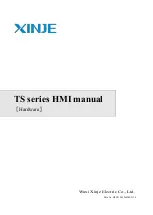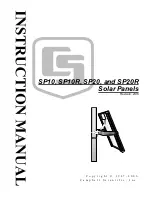
Page 5 of 13
Sales Office
4th Fl., First Tower,
55, Bundang-ro, Bundang-gu,
Seongnam-si, Gyeonggi-do,
13591 Korea
Factory
313, Soi-ro, Soi-myeon, Eumseong-gun,
Chungcheongbuk-do 369-872, Korea
site over 1,000m (3,280ft) above sea level is permitted.
※
Installations under the condition of wind strength specified above are allowed only when the
methods of installations comply with Module Installation Instruction (Appendix 1.)
2) Specific Site Condition
The following actual site condition should be checked for adequate installations.
·
Hail, heavy snow, and sand are to be considered as important factors related to module damage and
power output decline.
·
HES recommend installing lightning rods in lightning-expected areas and SPD (Surge Protection
Device) for surge.
·
Air pollution, chemical gas, acid rain, and smoke are important factors to be considered.
·
Do not use PV modules in place of normal roofing.
·
PV modules are not recommended to be installed where salty wind hit directly. When PV modules are
installed in 7km from a body of salt water, the installer should check salt damage of the installed area.
·
PV modules shall not be immersed in water and shall not be continually exposure to water from a
sprinkler, fountain, etc.
·
PV modules shall not be installed in sulfurous area near sulfurous volcano and sulfurous spring.
·
If PV modules are installed near factory or plant area, they can be polluted by fumes and the pollution
may not be cleaned. Thus the installer should consider and check the installation area and the
distance from factory or plant area.
·
If PV modules are installed in damp environments, the installer should check the installation area to
see if there is a possibility that moss grows in PV modules.
·
In a harsh, hot, and humid environment, HES recommends using (-) grounding to inverters.
·
Do not install PV modules indoors or on moving objects.
4. Installation
·
Generally modules are fixed using mounting holes or clamp hardware.
·
Each module must be securely fixed
at a minimum of 4
– 8 points on two each side of long frame.
·
The mounting design must be certified by a registered professional engineer. The mounting design
and procedures shall comply with local electrical and building codes.
·
Mounting hardware is not provided by HES.
·
Mounting hardware like those in Picture 1 & 2 is highly recommended by clamping or bolt & nut
mounting (Torque level: 16 N·m for bolting method, 8 N·m for clamping). The material of bolts and
nuts are recommended as stainless steel.
·
Area of module frame fastened by each clamp shall be no less than 400 mm
2
.
(clamp length ≥50mm,
the clamped width of module frame shall be in this area: 8-11mm)
·
Detailed mounting method is described in ‘module installation instruction’ in the Appendix 1.































